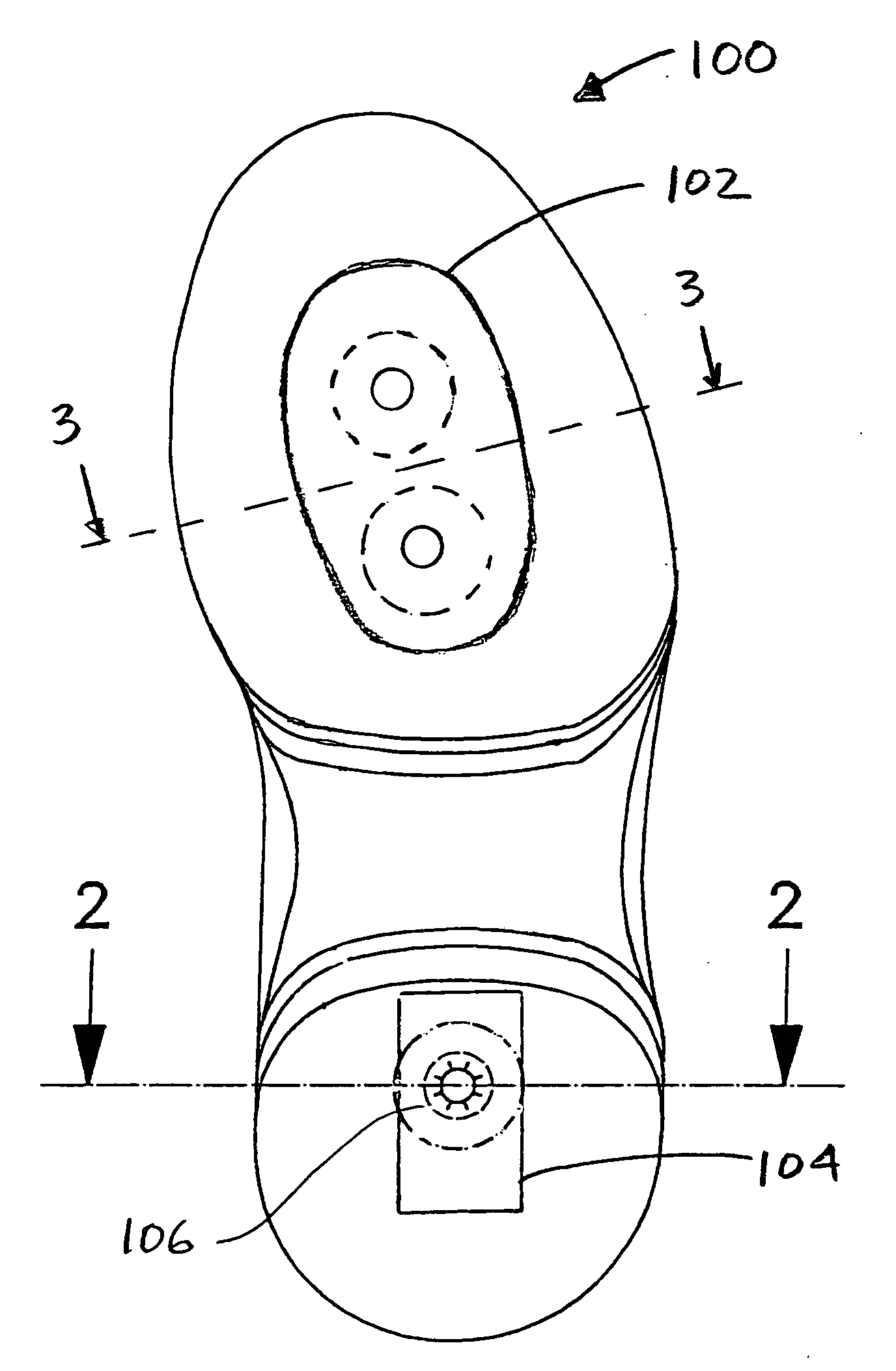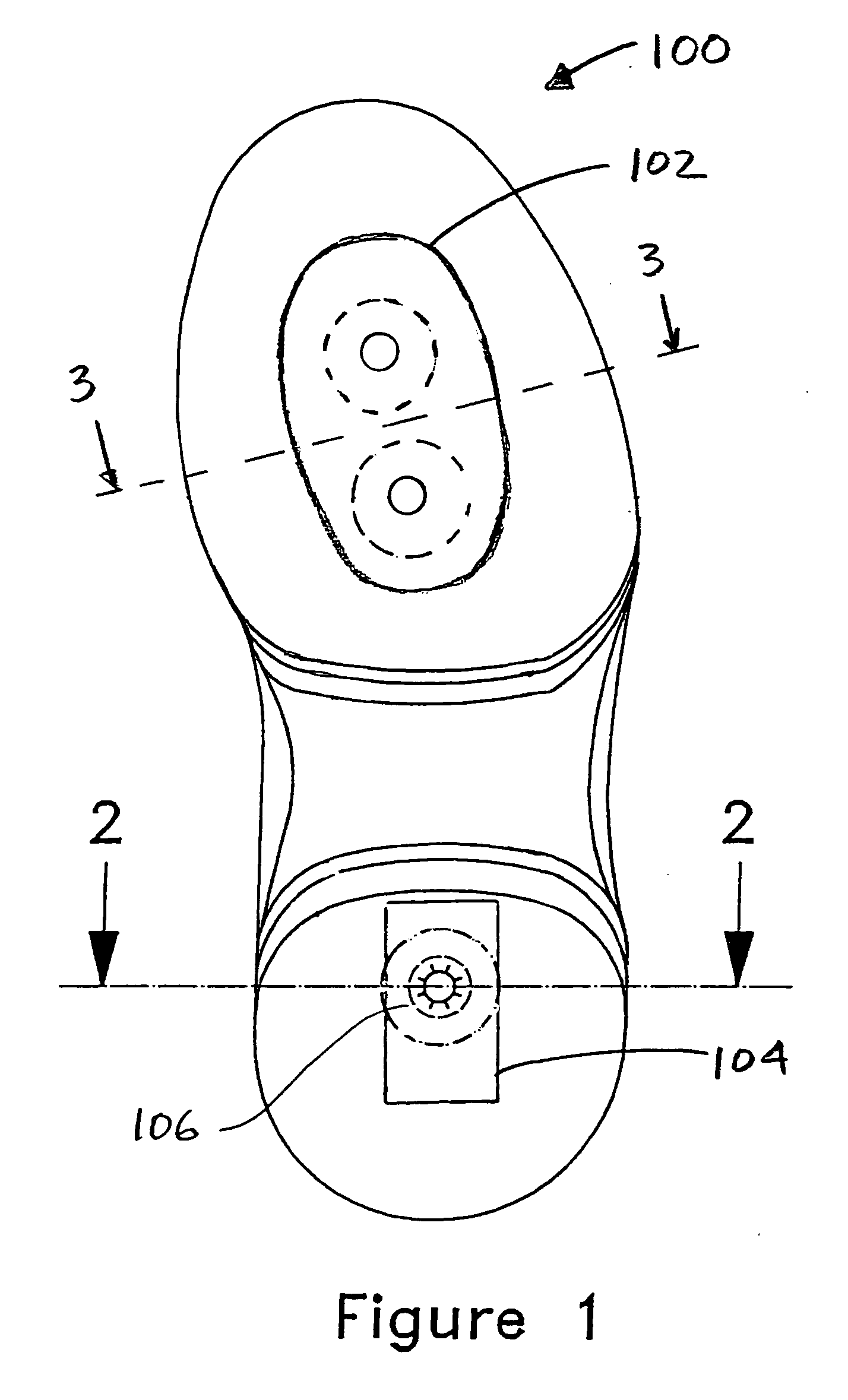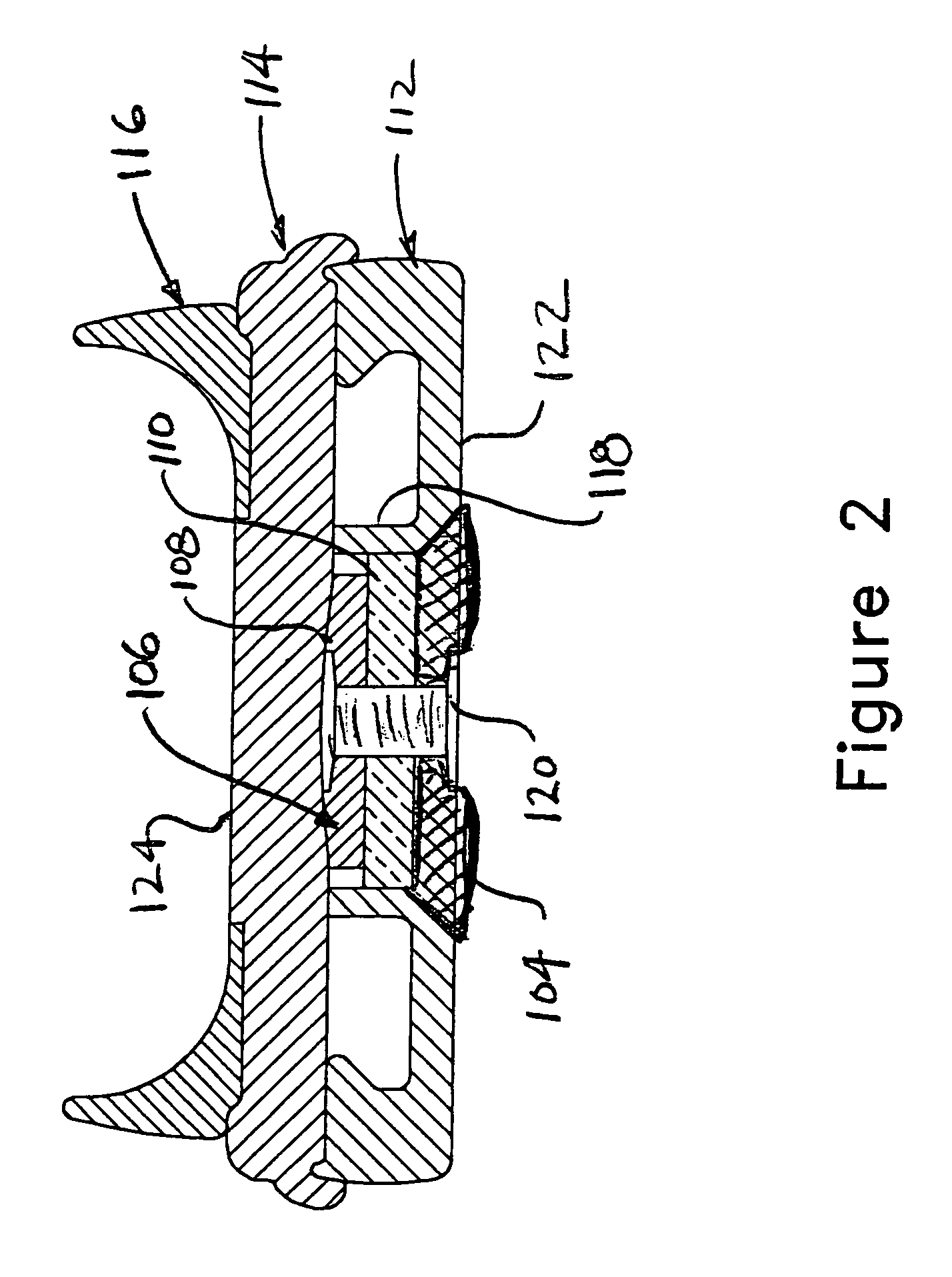Variable surface sole for bowling and other shoes
a bowling and other shoe technology, applied in the field of performance shoes, can solve the problems of a step change and no continuous adjustability, and achieve the effect of raising or lowering
- Summary
- Abstract
- Description
- Claims
- Application Information
AI Technical Summary
Benefits of technology
Problems solved by technology
Method used
Image
Examples
embodiment 200
[0033]FIG. 4 illustrates another embodiment 200 where the pads 202, 204 are situated on either lateral side of the centerline, in the foresole. Each of these pads can be the same as, or variations of the pads and actuator shown in FIGS. 2 and 3. One or two pads can optionally be situated in the center or forward regions of the foresole.
embodiment 300
[0034]FIG. 5 illustrates another embodiment 300 where larger pad or platform 302 supports a plurality of cleats 304 that extend outwardly, for example, in a hiking or similar boot. In this instance, the adjusting device 306 adjusts the platform 302 into and out of the shoe, whereas the cleats 304 provide the texture, thus effective friction, for the foresole and / or heel.
embodiment 400
[0035] In the embodiment 400 of FIGS. 6 and 7, the adjustable region 402 comprises a large pad with ripples 404 having nominal amplitude whereby the adjustment varies the amplitude. FIG. 7A shows a nominal amplitude B and spacing A, whereas FIG. 7B shows that compression along the direction indicated by the arrow, increases the amplitude B′ while decreasing the spacing A′ between peaks. This can be accomplished in one embodiment, by providing actuating screws 406, 408 or the like at one or both of the front and back rims of the heel. One of ordinary skill can provide appropriate seating and confinement of the rippled material, such as rubber or the like, and any intermediate attachment points to a frame or the like in the base of the heel, to assure that during compression, the pad does not undergo a gross buckling or warping.
[0036] Alternatively, as shown schematically in FIG. 8, an elongated pad extending, for example, from front to back or from side to side of the heel or foresol...
PUM
 Login to View More
Login to View More Abstract
Description
Claims
Application Information
 Login to View More
Login to View More - Generate Ideas
- Intellectual Property
- Life Sciences
- Materials
- Tech Scout
- Unparalleled Data Quality
- Higher Quality Content
- 60% Fewer Hallucinations
Browse by: Latest US Patents, China's latest patents, Technical Efficacy Thesaurus, Application Domain, Technology Topic, Popular Technical Reports.
© 2025 PatSnap. All rights reserved.Legal|Privacy policy|Modern Slavery Act Transparency Statement|Sitemap|About US| Contact US: help@patsnap.com



